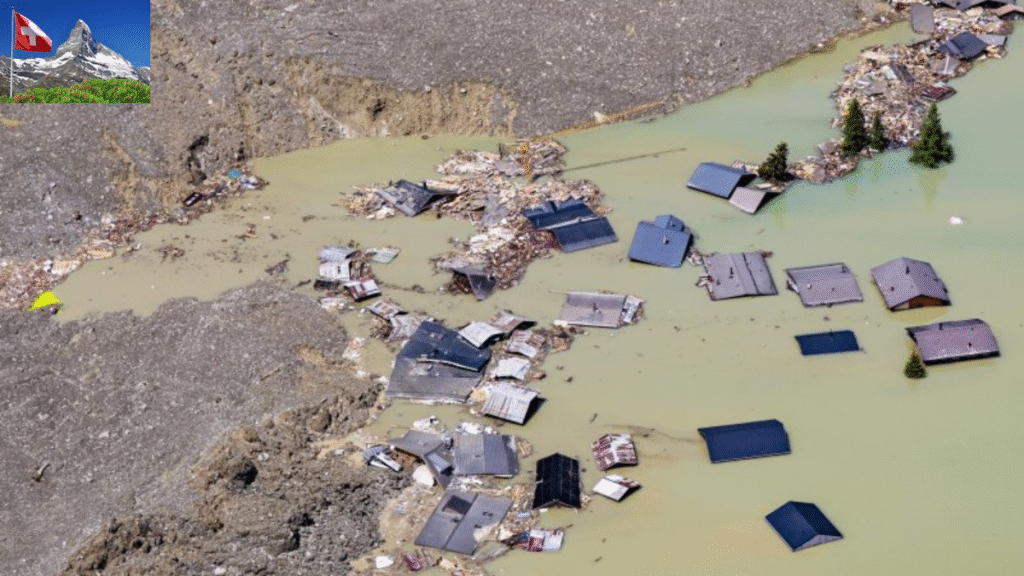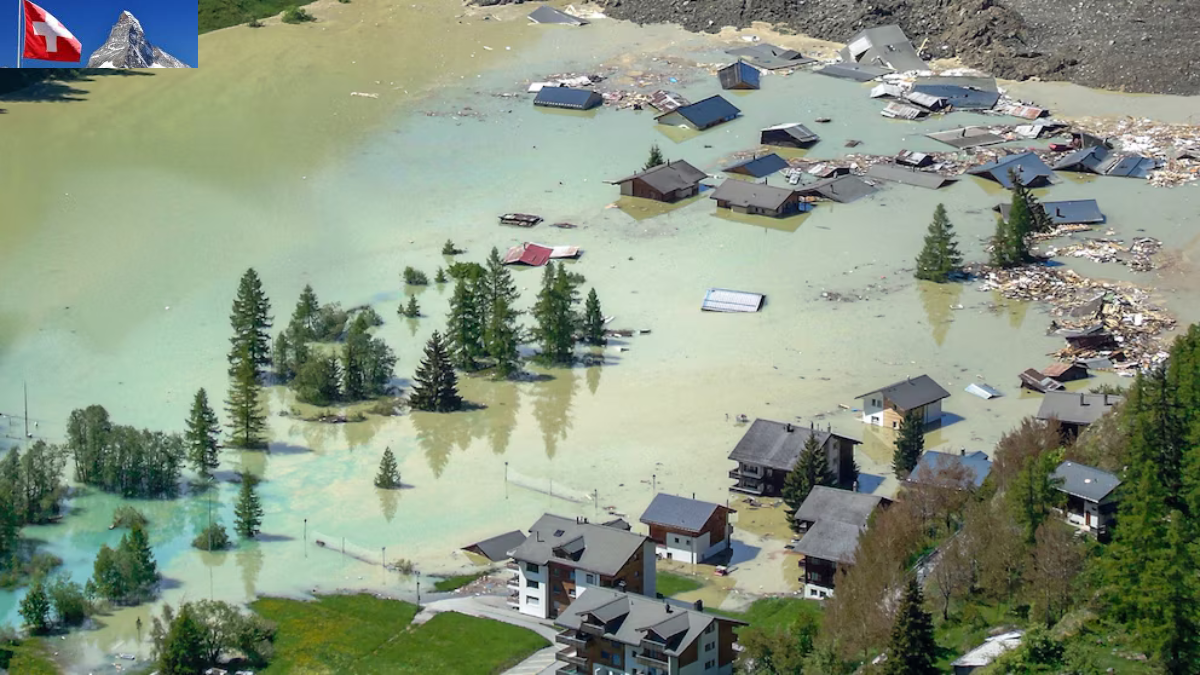The idyllic silence of the Valais Alps shattered with the sound of the world tearing apart. High above the Swiss village of Bondo, a massive section of the Tschierva Glacier, weakened by relentless heat, sheared off. What followed wasn’t just a landslide; it was an apocalyptic torrent – a tsunami of mud, rock and ice estimated at 4 million cubic meters – screaming down the valley at terrifying speed. In mere minutes, this centuries-old Swiss village wasn’t just damaged. It was wiped off the map. This is not hyperbole. This is geologic rage. Climate change, no longer a distant threat, delivered a brutal, concrete verdict in the heart of Switzerland.
The Day the Mountain Moved: A Timeline of Terror
- Pre-Dawn Calm: August 23rd. Swiss Village Bondo sleeps. Hikers prepare. The Alps stand majestic. Deceptively serene.
- The Fracture (Approx. 08:30 Local Time): Sensors later revealed the critical break. Tons of sclerotic ice, destabilized by weeks of extreme heat penetrating deep fissures, succumbed to gravity.
- The Unleashing: The collapsing glacier ice acted like a monstrous plunger, detonating a catastrophic mudslide (debris flow). It ripped into the slopes below, liquefying millennia of accumulated rock and soil.
- The Onslaught (Minutes Later): A wall of destruction, reportedly 200 feet high in places, a churning mass moving at hundreds of kilometers per hour, engulfed Bondo. Buildings vanished. Roads dissolved. Forests were plucked from the earth like weeds.
- The Aftermath: A desolate, grey scar. Silence, broken only by emergency sirens. Eight souls confirmed lost. Dozens more, residents and hikers, simply gone. Feared dead. Entombed.
Bondo: Before the Oblivion Wave
Imagine it. A postcard-perfect cluster of traditional stone and wood chalets nestled under the Piz Cengalo peak. A haven for hikers exploring trails through larch forests and wildflower meadows. History etched into its walls. Generations lived, loved, labored here. Snuffed out in the time it takes to boil a kettle. The sheer suddenness is paralyzing. Survivors described a “huge boom,” then the mountain “coming towards us.” No time. No escape. Only instinct and terror.
Why? The Unfolding Science Behind the Slaughter
This wasn’t random. It was predictable physics, accelerated by our warming world.
- The Heat Anomaly: Summer 2025 saw record-shattering temperatures across Europe. The Alps baked. Permafrost, the icy glue holding alpine slopes together for millennia, thawed at alarming depths. Stability vanished.
- Glacial Retreat: The Tschierva, like glaciers globally, has been in precipitous retreat for decades. This exposes unstable rock faces previously buttressed by ice. Creates voids. Weakens structures.
- Water Infiltration: Meltwater from the glacier surface seeps deep into cracks within the mountain flank. Acts as a lubricant. Reduces friction. Hydrostatic pressure builds. Think of a failing dam.
- The Trigger Point: A specific heatwave, a specific rainfall event, or simply the cumulative strain… exceeded the critical threshold. The flank failed. The glacier ice followed. The bomb detonated.
The Grim Search & Stark Warnings of Swiss Village

Rescue efforts were Herculean, immediate, and heartbreaking. Helicopters buzzed over the sea of mud, searching for signs of life amidst the 10-meter deep slurry. Heavy machinery struggled against the viscous morass. Hope dwindled hour by hour. Each recovered body a testament to the scale of the geologic violence.
The scientific community is unequivocal, voices sharp with urgency:
- “This is Climate Change in Action”: Not future tense. Present. Active. Deadly. The Alps are warming at nearly double the global average. Glacier loss is accelerating.
- “Permafrost Thaw is the Sleeping Giant”: Vast areas of Alpine rock stability depend on frozen ground. Its degradation is invisible, insidious and potentially catastrophic.
- “Bondo is a Harbinger”: Other villages. Other valleys. Other unstable slopes. The risk map for the Alps is being violently redrawn.
Beyond Bondo: The Echoes of a Lost Swiss Village
The erasure of Bondo resonates far beyond its valley. It’s a stark, brutal microcosm of the planetary crisis:
- Infrastructure Vulnerability: Our settlements, often built in landscapes shaped by colder climates, are now sitting ducks for processes unleashed by warming. Adaptation isn’t optional; it’s survival.
- The Speed of Change: Models predicted increased instability. But the ferocity and immediacy of events like Bondo challenge even pessimistic forecasts. The system is responding non-linearly. Dangerously.
- The Human Cost: Statistics blur. Bondo forces us to confront the visceral reality – homes pulverized, lives erased, communities shattered. Climate change has names. Faces. It had an address in Switzerland.
A Landscape Forever Scarred, A Warning Forever Etched
The mud will eventually harden. The scar on Piz Cengalo will fade, slowly over centuries. But the void where the Swiss village of Bondo once stood is permanent. A raw, brutal monument to a warming world. The pristine Alpine air now carries the acrid tang of upturned earth, profound loss, and the eternal silence of a Swiss village erased.
The collapse of the Tschierva Glacier wasn’t just ice falling. It was the sounding of a geologic alarm. A violent demonstration that the slow creep of climate change can detonate into instantaneous, localized apocalypse. Swiss Village Bondo is gone. Wiped off. Obliterated. Its silence screams a question the world can no longer afford to ignore: Who, and where is next? The mountains are weeping ice. We must hear them. Before the next surge descends.
